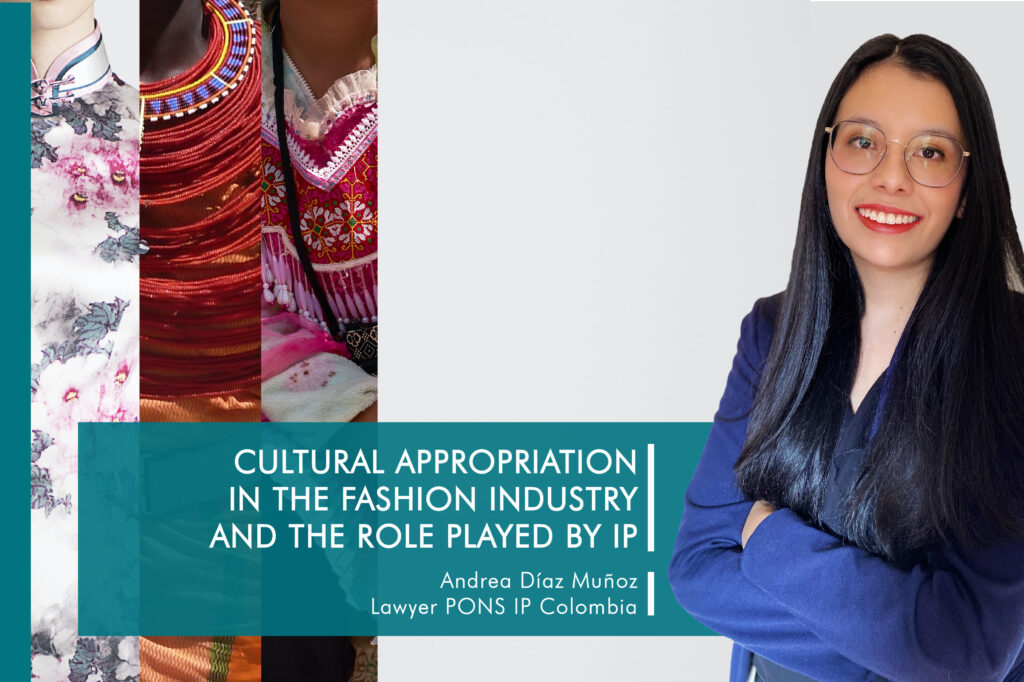Globalization is a typical phenomenon of the contemporary world. Borders between countries, cultures and traditions are becoming more flexible. The possibility of connecting the world is becoming simpler and narrower. On the other hand, fashion has been a cultural manifestation, which, as expected, has also been affected by globalization.
The fashion industry, needing to find new designs and launch new collections that captivate consumers, finds inspiration in the world around us, in nature, architecture, art, literature, music, dance, tradition, history, fiction, etc. As a result of this constant search for inspiration, the industry has embraced a controversial trend. This involves the use of drawings, fabrics, patterns, designs or symbols that have an ethnic, traditional or folkloric origin, often with a high mystical or religious content, belonging to minorities from different nations or countries. This has led the communities that have traditionally used these designs to express their disagreement in some events, as they consider this situation to be an improper ‘cultural appropriation’.
In 2019, the famous sports shoe company, Nike, decided to launch an edition called ‘Air Force 1 Low’ that sought to pay homage to Puerto Rican culture. However, this was a source of controversy, as the Guna or Dulce community – originally from Colombia and Panama – warned that this design imitated a traditional pattern called ‘mola’. This event led Nike to publicly apologize and cancel the launch of that edition.
A similar situation arose with the designer Carolina Herrera in her ‘Resort 2020’ collection. In this case, the Mexican Ministry of Culture drew attention to the potential cultural appropriation. The Mexican authority argued that the patterns in their designs originated from the Mexican cultures of Hidalgo, Tlaxcala and Tehuantepec. However, Carolina Herrera representatives indicated that, although the collection had some references to Mexican culture, they wanted to make a sort of homage, but in no way was it a copy or plagiarism.
Due to the cases mentioned above and several other similar cases, some have come to consider that the use of patterns, designs or fabrics used by minorities or specific cultures as an expression of their culture and traditions – which are also used by designers or fashion houses, but rather to sell collections – violates these native communities’ intangible cultural heritage. Meanwhile, the fashion industry claims that its intention is to exalt, vindicate or pay homage to these peoples or communities. However, as expected, this matter cannot be solved easily, as the difference between inspiration and appropriation can be very subtle in these cases.
There is no unanimity on the concept of ‘cultural appropriation’, although for theoretical purposes the definition given by the World Intellectual Property Organization (hereinafter WIPO) in the August 2019 review seems useful:
‘It can be described as the act by a member of a relatively dominant culture of taking a traditional cultural expression and repurposing it in a different context, without authorization, acknowledgement and/or compensation, in a way that causes harm to the traditional cultural expression holder(s).’ 1
In the same vein, Article 2 of the Convention for the Safeguarding of the Intangible Cultural Heritage defines intangible cultural heritage as ‘the practices, representations, expressions, knowledge, skills – as well as the instruments, objects, artefacts and cultural spaces associated therewith – that communities, groups and, in some cases, individuals recognize as part of their cultural heritage 2.’
It is important to bear in mind that elements such as clothing, artistic patterns, designs, fabrics, among others, are not simply styles, but are closely related to the identity of some communities or native peoples. They have also been preserved and transmitted, generation after generation, representing a memory, their cosmogony, as well as contexts of formation and origin. This is in addition to the cases of discrimination or repression that the vast majority of these communities have historically suffered.
Unfortunately, intellectual property has encountered some drawbacks when it comes to protecting this type of intangible cultural heritage. Specifically, copyright conflicts with the difficulty of individualizing the author, establishing a precise origin and the possibility of works falling into the public domain. All this has led copyright law to establish new challenges to enable this heritage to obtain adequate protection.
As for the first, identifying the author of the works, the difficulty lies in the fact that we are dealing with folklore and cultural expressions that have been developed generation after generation by a large group of people, so identifying a specific author or authors is not possible. As for the second, to determine the precise date in which the work was created, similar to the previous issue, not only is there not enough documentation to determine it, but also, due to the progressive way in which they have been elaborated and developed, there is no single date of creation.
Third, it could be considered that most of the folklore and cultural expressions have fallen into the ‘public domain,’ in other words, any third party could make use of the works without the author’s authorization and without the need to pay any kind of compensation, however, still with some limitations. Limitations refer to the obligation to always acknowledge the author of the original work and not to use the work in such a way as to damage the author’s reputation or image.
In order to solve legal conflicts and protect traditional cultural expressions, the WIPO Intergovernmental Committee on Intellectual Property and Genetic Resources, Traditional Knowledge and Folklore (IGC) was created in 2000. Since then, efforts have been made to issue regulatory frameworks and international instruments that encourage the protection of traditional knowledge.
Notwithstanding the above, legal discussions are still latent, the differences in legislation between countries, the absence of clear regulations and the specific circumstances of each case, prevent it from being a closed discussion. Therefore, the correct response to the issue should not be to censor absolutely all uses of traditional cultural expressions in the fashion industry. On the contrary, a harmonious collaboration between both players should be sought. Researcher Rina Deshpande has suggested a series of elements that can be taken into account before making use of traditional cultural expressions.
One of them consists of studying the context, both of the culture itself and of the pattern, design or symbol to be used. For example, to know the origin, the traditions that revolve around this expression and what it represents for the community. Subsequently, it is worthwhile to analyze whether the use of the expression could be offensive, wondering what its role is within the creative process. Finally, determine whether that use does justice to the context of that particular cultural expression.
To this end, it is recommended that the use of cultural expressions implies respect for the original community, recognition and gratitude to those holders and, in turn, authorization by them.
These cases are not utopian, the Brazilian designer Oskar Metsavaht launched the ‘Spring 2016’ collection through his brand Osklen, in which he emphasizes the patterns and designs of the Apiwatxa or Asháninka culture. To respectfully incorporate the heritage of this community, he researched about them, asked for authorization, gave them an economic compensation and has given visibility to the community’s fight against deforestation.
Another example is the Canadian clothing brand Canada Goose. In 2019, they launched the ‘Project Atigi’ collection. The collection was about traditional or typical coats of the Inuit peoples who inhabit the Arctic regions. In order to be respectful of the community, they recognized the origin of the designs, preserved the traditional aspects of their production and have directed part of the profits to an organization that represents the community.
In conclusion, it is recommended that any use of cultural or folklore expressions that are original or characteristic of a culture, people or community, should be respected, appreciated and, of course, original. Additionally, they can involve people belonging to the community, who would not only have the experience to support the creative work, but would also be faithful to the traditional process, highlighting and vindicating the intangible cultural heritage.
Andrea Díaz Muñoz
Lawyer PONS IP Colombia
1 https://www.wipo.int/wipo_magazine/es/2019/04/article_0002.html
2 https://ich.unesco.org/es/convenci%C3%B3n




